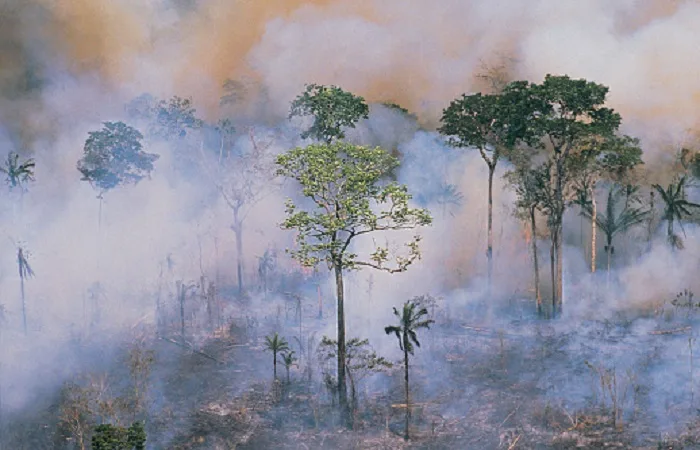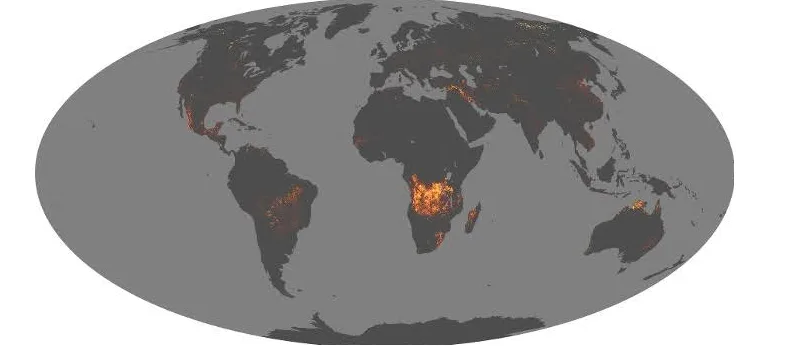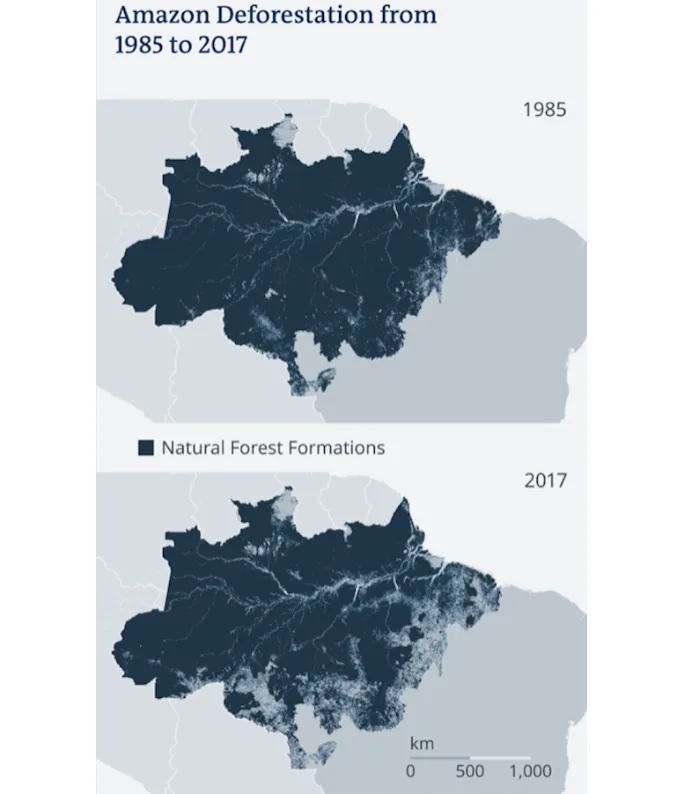
The Amazon wildfires are making headlines, but other fires are burning
In the past week, media and political attention have focused on the Amazon wildfires, with the spotlight set on Brazil. But other fires are burning.
Satellite data shows over two days last week, there were 6,902 fires in Angola, 3,395 in the Democratic Republic of Congo and 2,127 in Brazil. Looking back into June, wildfire observations show that during one week alone, close to 250,000 fires were burning simultaneously across Africa, mainly as a result of slash-and-burn agriculture.

Map of global Wildfires in June 2019. Courtesy: NASA
NASA satellite data has come a long way to show how the frequency of wildfires has been on the rise globally since the turn of the century. Most of the fires are related to agricultural practices and not just in South America — some countries in Africa and Southeast Asia are also on the top of the list. In all three regions, many of the fires occur between August and October and are set to clear land for agriculture. Forest fires in the northern hemisphere are also on the rise and are linked to climate change, with higher temperatures and drier weather conditions favoring the increase.
Despite all the burning going on, NASA data reveals that the surface area burned globally has been declining since 2003. It’s a decline that comes mainly from subtropical areas and has to do with population growth and expansion into grassland and savanna territories. This, however, is not the case across all regions. For instance, in the western United States and parts of Europe, wildfires have seen a significant increase in intensity and reach, mainly due to climate change.
DOES MORE BURNING MEAN MORE DEFORESTATION?
“In 2002, just two countries — Brazil and Indonesia — made up 71 percent of tropical primary forest loss. More recent data shows that the frontiers of primary forest loss are starting to shift," reads an excerpt from an April World Resources Institute report.
"Brazil and Indonesia only accounted for 46 percent of primary rainforest loss in 2018, while countries like Colombia, Côte d’Ivoire, Ghana and the Democratic Republic of the Congo saw loss rates rise considerably.”
The Amazon rainforest is the largest in the world, but the Congo Basin tropical rainforest is a close second, spanning close to 200 million hectares. It plays an equally important role in hosting plant and animal species while regulating the Earth´s climate system.
In Africa, fires are confined primarily to savanna areas, but the nearby rainforest is also at risk, as deforestation due to industrial activity has made the region more vulnerable. In Central Africa slash and burn agriculture, together with rising temperatures in the region, have led to an increase in wildfire activity.

Source: World Resources Institute.
Tropical forests like the Amazon produce large quantities of oxygen, making up to 20 per cent of the global total, but they also consume most of it. Plants in the rainforest produce oxygen through photosynthesis, but like animals and microbes in the forest, they also absorb it. The main concern for scientists is not a lack of oxygen production on Earth, but rather how the increase and intake of carbon dioxide are being modified by wildfires and deforestation respectively.
WHAT DOES ALL THIS DEFORESTATION MEAN FOR OUR CLIMATE?
Currently, the world emits around 40 billion tonnes of carbon dioxide into the atmosphere every year. The Amazon alone absorbs 2 billion tonnes, about 5 per cent of total global emissions. So the main role of the Amazon and other tropical forests around the planet is to act as sinks and drain heat-trapping carbon dioxide from the atmosphere.
But deforestation means more than the removal of carbon-absorbing forests. During the rainy season, people cut down vegetation, pull out trees from their roots, dry them out, and burn them during the dry season. Imagine millions of logs that have been drying in the sun for several months eventually becoming an enormous bonfire across the rainforest, sending millions of tons of carbon dioxide back into the atmosphere.
Less sink and more emission of carbon dioxide means the atmosphere concentration of this top greenhouse gas is expected to continue rising. With more carbon dioxide in the atmosphere global temperatures will also be higher and climate change greater.
From the moisture point of view, rainforests recycle their water to produce a portion of the region's rain, so deforestation makes rain less frequent, extending and intensifying the dry season. If 20 to 25 per cent of the forest is destroyed, as expected, the dry season will expand enough that it will no longer be a forest, but a savannah.












